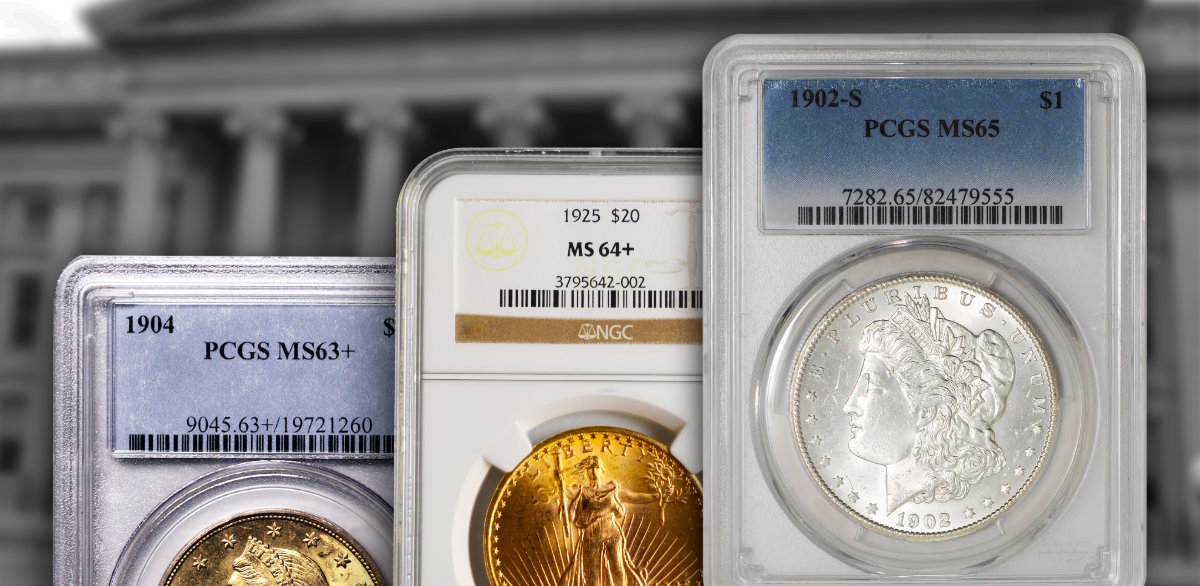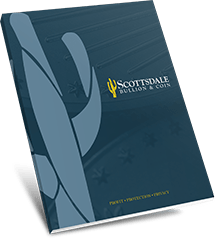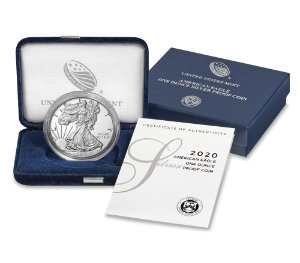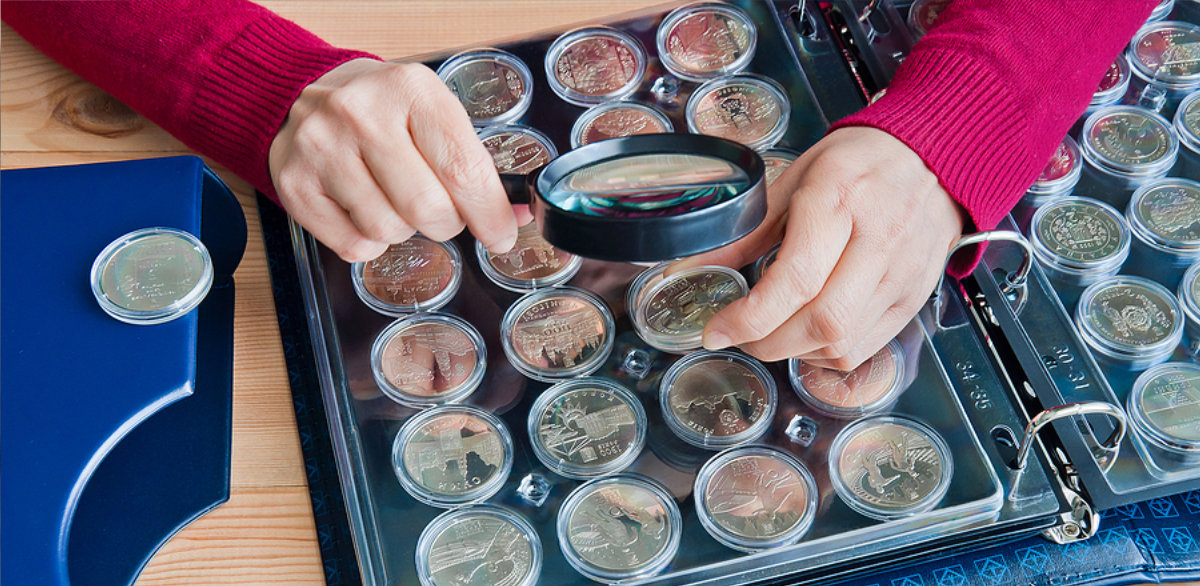
Gold and silver coins can be found in many states: from worn down pieces of metal to specimens fine enough to earn a mint state grade, the pinnacle of which is the perfectly shining proof coin.
A mint state coin shows no wear. It’s never been in circulation. And the coin closely resembles its condition at the time of striking, sometimes over a hundred years prior, allowing investors and collectors alike a little glimpse into history.
The Mint State Coin Grading Scale
When you intend to purchase a gold or silver coin, it is helpful to be familiar with the appearance of a mint state coin. To that end, coin collectors and investors can benefit from understanding the coin grading scale.
The Sheldon Scale is the invention of the famed numismatist Dr. William Sheldon. Since its introduction in 1948, coin grading agencies, such as the Professional Coin Grading Service (PCGS), have adapted the Sheldon Scale. Judged on the scale, mint state (MS) coins earn ratings in the 60-70 range.
You might wonder why all uncirculated coins aren’t rated at the top of the scale. While it’s well known that mint state coins are not worn, they do vary in other ways. For example, some mint state coins have bag marks, relatively weak strikes, or other imperfections, even though they are uncirculated. Thus, the nuanced hierarchy of mint state ratings.
PCGS Grading Standards
MS/PR-70 Mint State (or Proof 70)
This is a coin of the finest possible quality, completely struck, with gorgeous luster. There are no visible marks on the coin at all.
MS/PR-69 Mint State (or Proof 69)
This coin is nearly fully struck. There are faint, tiny visual imperfections in evidence upon a close inspection of the coin.
MS/PR-68 Mint State (or Proof 68)
Here you’ll find a minor weakness in the strike. The scant imperfections are hardly discernable.
MS/PR-67 Mint State (or Proof 67)
This coin is well struck yet has minor flaws that can be seen without magnification.
MS/PR-66 Mint State (or Proof 66)
This coin, too, is well struck. Outside the focal points of this coin, you’ll find a few light marks.
MS/PR-65 Mint State (or Proof 65)
Here, the strike is above average, and small marks are present, mainly outside the coin’s focal points.
MS/PR-64 Mint State (or Proof 64)
This is a coin with an average or above average strike. A few faint marks might be visible to the eye.
MS/PR-63 Mint State (or Proof 63)
The strike here is average or slightly below, with moderate marks visible.
MS/PR-62 Mint State (or Proof 62)
This is a coin of an average or below average strike, with a number of marks.
MS/PR-61 Mint State (or Proof 61)
There are multiple, obvious marks on this coin and the strike is average or lower.
MS/PR-60 Mint State (or Proof 60)
This coin has a weak strike and is heavily marked.

Everything you need to know to get started in Precious Metals
Learn how precious metals can strengthen your portfolio, protect your assets and leverage inflation.
Request the Free Guide
The “Eye Appeal” Component of Mint State Coin Grading
The small grade differences that sharply impact a coin’s market value can be challenging to detect, even by the best trained eye. From the baseline MS/PR-60, associated with a lower visual appeal, to the MS/PR-70, which is characterized by a high luster and outstanding visual appeal, mint state coins fall on a spectrum that requires painstaking notice of a coin’s subtle highlights.
What separates the MS/PR-69 from the MS/PR-70 mint state coin? A high-grade coin has outstanding eye appeal. Extraordinary luster (or mirror-like reflection, if a proof coin), excellent contrast, and perfect color all contribute to the higher grade. An uneven tone, or the dullness of an over-dipped coin, will detract from the grade.
If you are curious about whether your coin hits all the right notes for visual appeal, you can get an idea of what the expert coin graders see on PCGS’ “Guidelines for Eye Appeal”.
About Uncirculated to Poor State Coins
Coins that come close to mint state may earn an “About Uncirculated” (AU-50, 53, 55, 58) grade. These coins do show wear. It might be almost undetectable, slightly in evidence on the most prominent spots of the coin. The luster ranges from medium to nearly perfect. An AU-58 coin might pass for a mint state coin, so it’s been called the “slider” or compared with an MS-63 coin with a touch of wear.
Yet the difference in value from AU to mint state can easily exceed $100, and for certain gold coins, the difference can run into the thousands of dollars.
From AU down, the scale drops all the way to a rating of 1, which is Poor.
Mint State vs. Proof Coins

The process of hand-loading the press and the special blanks used for striking give the mint state coin a satin-soft appearance. Yet, many mint state uncirculated coins do have visible blemishes, as outlined and described on the scale explained above. In contrast, proof coins are the most perfectly defined. They fall into a special grade of uncirculated coins.
The blank for a proof is hand-polished to create high-quality strikes, and the coin is thoroughly inspected. Thus, a high, mirror-like gloss showing every detail is the hallmark of a proof coin. As fewer proofs by far are made than non-proof coins, a proof coin has exceptional scarcity value.
Moreover, the Treasury Department classifies proof coins as coins of the highest quality produced by the U.S. Mint.
Can a proof coin ever be found in less than mint condition? Yes, if inadvertently circulated or even scratched in cleaning by its buyer. With valuable coins, always take care to avoid damage from improper cleaning (read more: Should You Clean Old Coins?), decorative use or wear, storage, or the damage that plastic casing can do to silver over time.
How to Authenticate Your Coin’s Value

Certificates of authenticity, obtained after grading by a third-party service, such as the Numismatic Guarantee Corporation (NGC) or the PCGS, can enhance the value of some coins, including coins dated 1915 and before, coins in denominations that went out of circulation (example: the Buffalo Head nickel), and antique silver dollars—but usually only if they’re in a mint (uncirculated) state.
That noted, if the coin is notoriously hard to find or the mintage had an extraordinarily low limit, even a circulated coin can benefit from certification.
It is helpful to gain a familiarity with the look of a mint state coin, and to develop a sense of whether it will be worthwhile to have a coin professionally graded. Indeed, for a mint state coin, it can be worthwhile to get a second expert grading opinion to ensure you have found the maximum assessment of your coin’s potential value. An increase in grade during the reconsideration process could significantly raise the valuation of an under-graded coin.
Should You Have Your Coins Graded?
At Scottsdale Bullion & Coin, our in-house experts are available to examine your gold or silver coins and assist you in determining whether it will be worthwhile to send them to a professional grading service.
Call us toll-free at 1 (888) 812-9892. If you’re located in the greater Phoenix, AZ, area you can reach us at (480) 459-5597. Should you wish to sell coins call and schedule an appointment for a coin appraisal.
